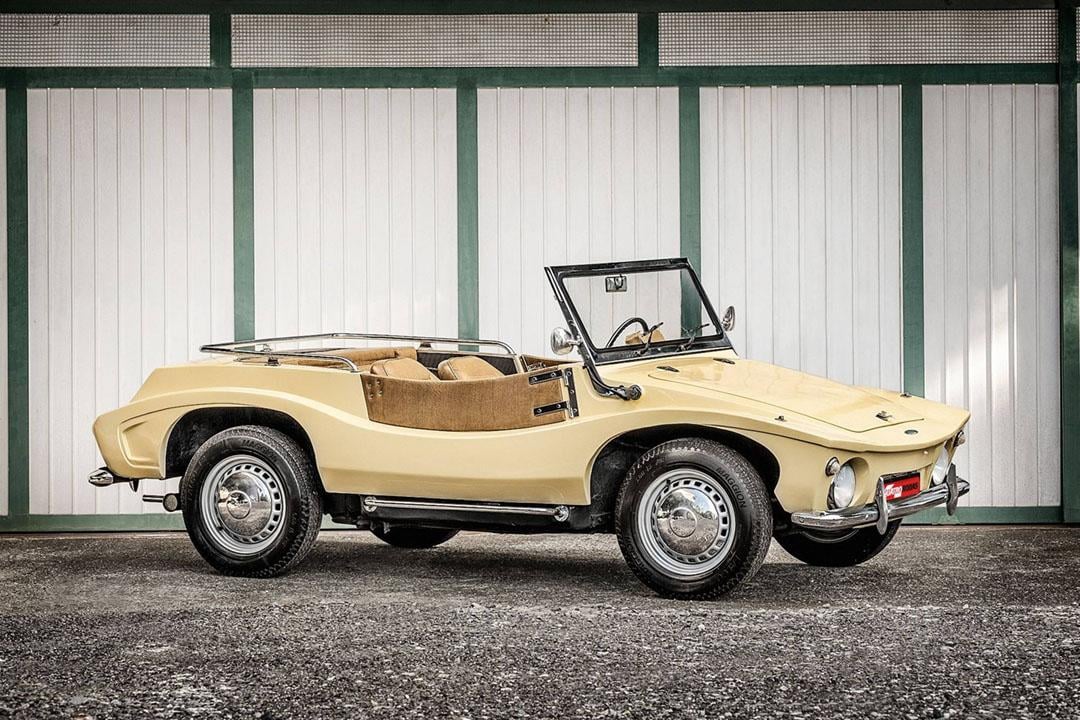
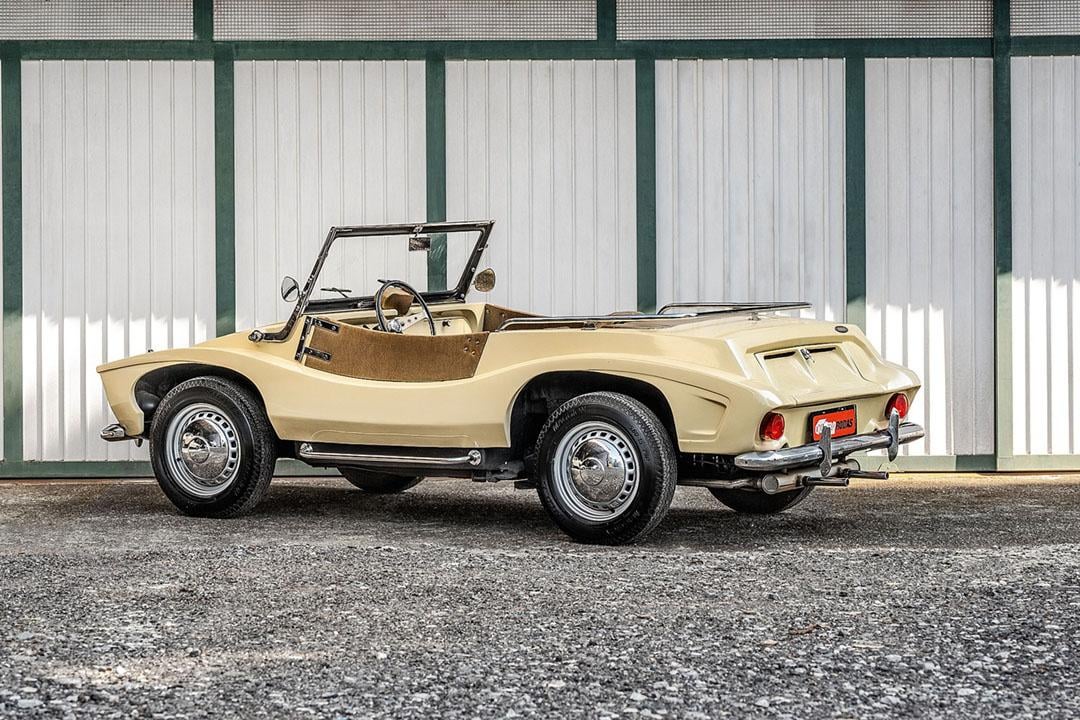
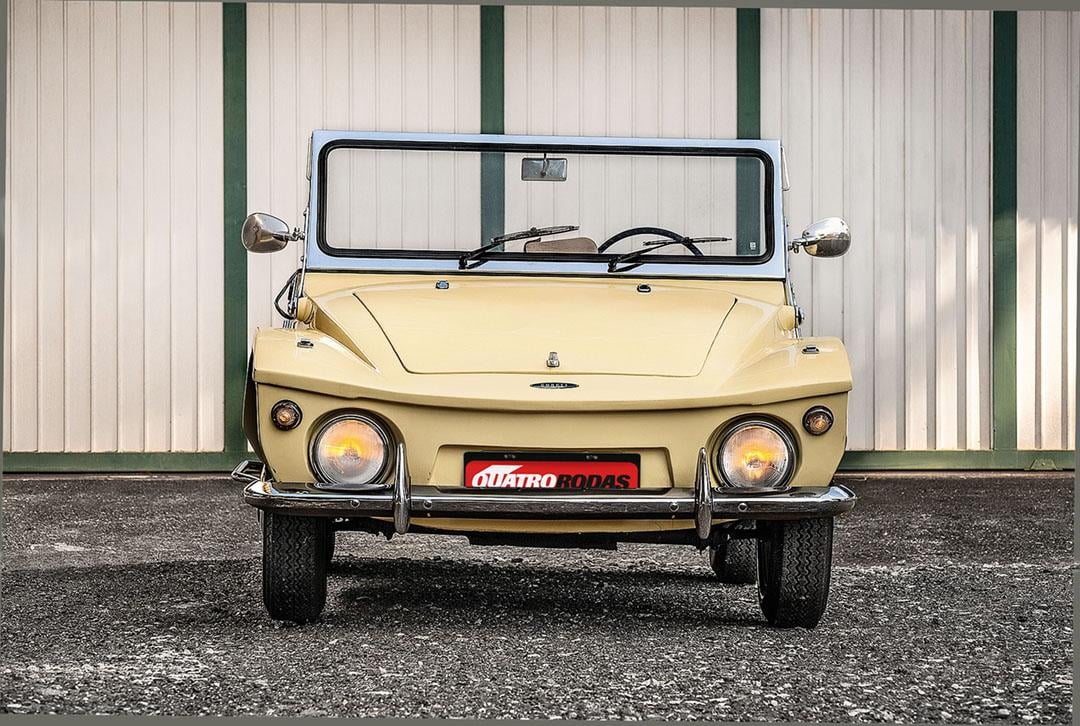
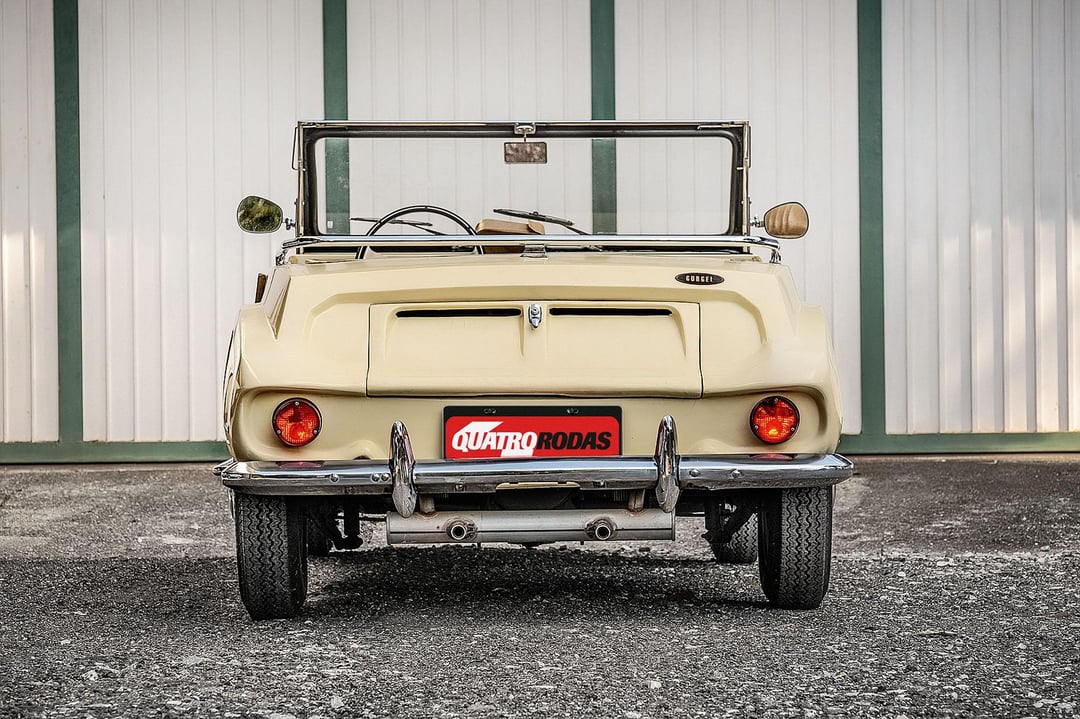
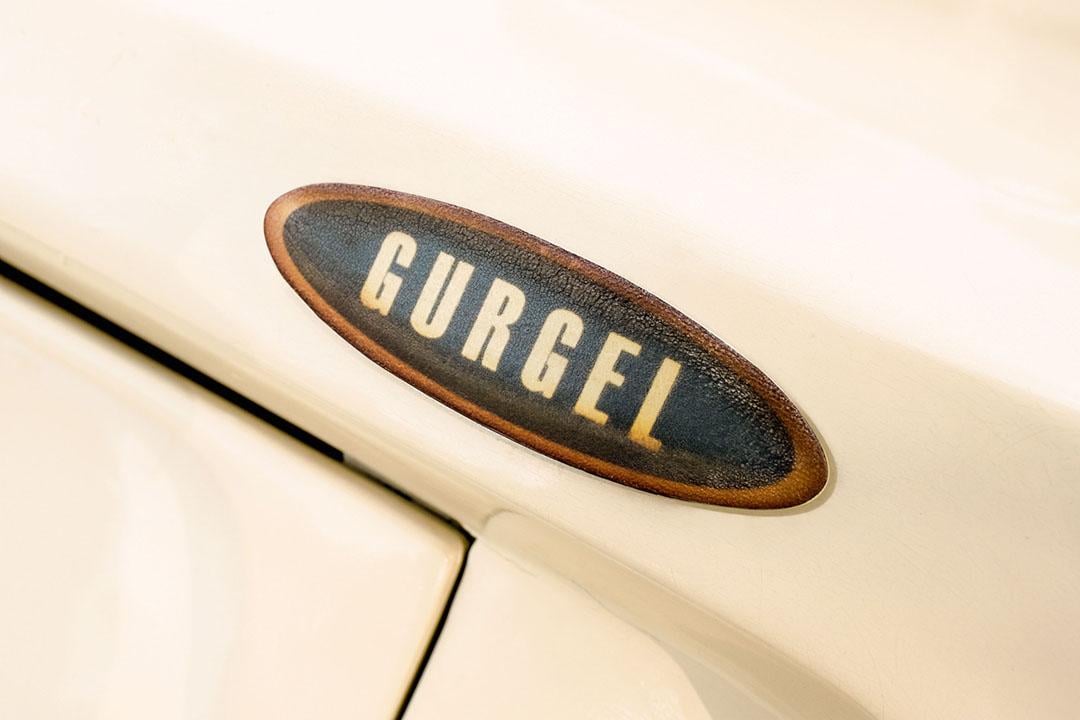



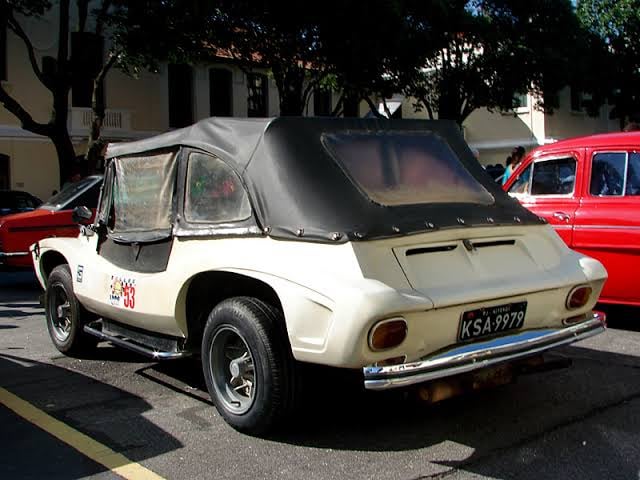
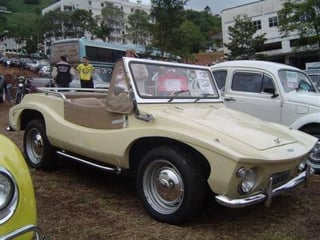
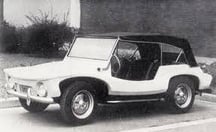
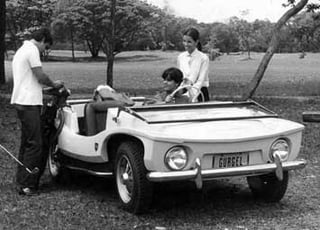
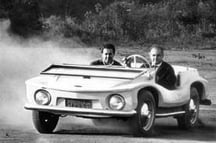
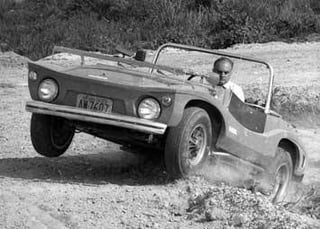
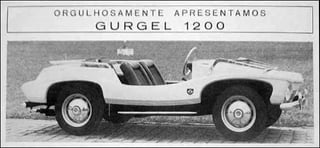
Shortly after graduating from the Polytechnic School of USP, engineer João Gurgel received a scholarship to the General Motors Institute in the USA. He returned to Brazil, joined Ford and in 1958 dedicated himself to the production of molded plastic, go-karts and microcars. In 1966, he presented his first automobile: the Gurgel 1200.
The mechanical design of the Gurgel 1200 was relatively simple: the chassis of the Karmann-Ghia sports car was shortened by about 36 cm or 1’2.17” and a body made of fiberglass-reinforced plastic was installed on it. This made it possible to develop four different versions: Enseada, Ipanema, Augusta and Xavante.
The Volkswagen became the Beetle and Friedrich became “Bob-by”: the friendship prospered and, in the 1960s, João became a partner at Macan (short for: Motores, Automóveis, Carroçarias e Náutica – Engines, Automobiles, Bodies and Boating), the VW dealership responsible for the Gurgel 1200. Schultz-Wenk not only approved the project but also requested a unit to display at VW’s own stand during the 1966 Auto Show.
The story of the model began about ten years earlier, in the São Paulo neighborhood of Ipiranga. While passing by a warehouse on Rua do Manifesto, João met Friedrich Wilhelm Schultz-Wenk, a German responsible for distributing a strange car with an air-cooled engine that arrived in Brazil disassembled in boxes: the Volkswagen.
Chosen by Schultz-Wenk, the Enseada was intended for recreational use. It offered four seats, a large trunk and special wicker seats in the style known as “Saint-Tropez”.
The Augusta was much more sophisticated, with a special dashboard, carpets, wide-rimmed chrome wheels, full-length hubcaps and an exclusive steering wheel. Aimed at professional use, the Xavante was the most rustic of the four and its 6.40 x 15 mud tires increased ground clearance.
The 1200 referred to the displacement of the air-cooled four-cylinder VW engine. With 8.8 kgfm at 2,400 rpm and 30 hp at 3,700 rpm, the performance was only not worse due to its reduced weight, just over 600 kg. The Macan spoke of an optimistic top speed of 115 km/h, but the average consumption of 14 km/l seemed reasonable.
Around 200 units were ordered at the 1966 Motor Show, a situation that ensured the commercial viability of the model. The new VW 1300 (38 hp) and VW 1500 (44 hp) engines ensured considerable improvements in performance: the Gurgel accelerated faster and overcame obstacles with greater ease.
The Gurgel was one of the 11 cars that competed in the “Troféu Quatro Rodas”, a competition held by the magazine in 1967 to encourage and promote national projects. It ended up losing the prize to the Puma GT DKW, but was promoted to the sports car category and even caught the interest of the most illustrious judge: the Italian designer Nuccio Bertone.
Aware that the Macan should focus on the activities of a dealership, João left the partnership and, in September 1969, founded Gurgel Indústria e Comércio de Veículos Ltda. In less than a month, the car was evaluated by journalist Expedito Marazzi, from QUATRO RODAS, who appreciated the performance of the 1500 engine and the stability provided by the low center of gravity.
It was at this time that the Gurgel received discreet changes, such as redesigned wheel arches, air intakes for the cooling fan in the rear fenders and a larger engine access space. The instrument panel was also revised and the tilting windshield was now anchored further forward on the body.
The Gurgel 1200 gave rise to the QT (Any Terrain) model, praised by none other than Colin Chapman, the builder of the English Lotus. Upon realizing that the shortened VW chassis was too fragile for off-road use, Gurgel developed the Xavante XT, with its own Plasteel chassis (steel tubes covered in fiberglass). It was succeeded by the X-12: exports to several countries consolidated João Gurgel’s reputation as a creator of jeeps capable of traveling in the most adverse conditions.
GURGEL 1200 TECHNICAL DATA
ENGINE: gasoline, longitudinal, 4 opposed cylinders, 1285 cm³, single valve train in the block, single-body carburetor, 38 hp (SAE) at 4600 rpm, 9.1 kgfm or 89.24 Nm at 2600 rpm
GEARBOX: manual, 4 gears, rear-wheel drive
DIMENSIONS
·Length: 370 cm (12’1.67″)
·Width: 160 cm (5’3″)
·Height: 138 cm (4’6.33″)
·Wheelbase: 204 cm (6’8.3″)
·Weight: 620 kg (1366.87 lbs)
WHEELS AND TIRES: steel, 5.60 x 1.50 15
FUEL CONSUMPTION: 14 km/l (32.93 mpg)
PRICE (October 1970): Cr$ 16,800
UPDATED PRICE: R$ 108,449
by OriginalPapaya8






